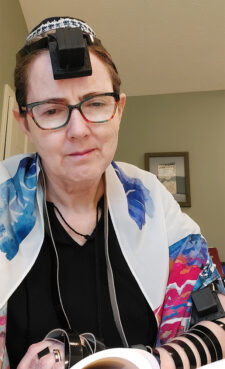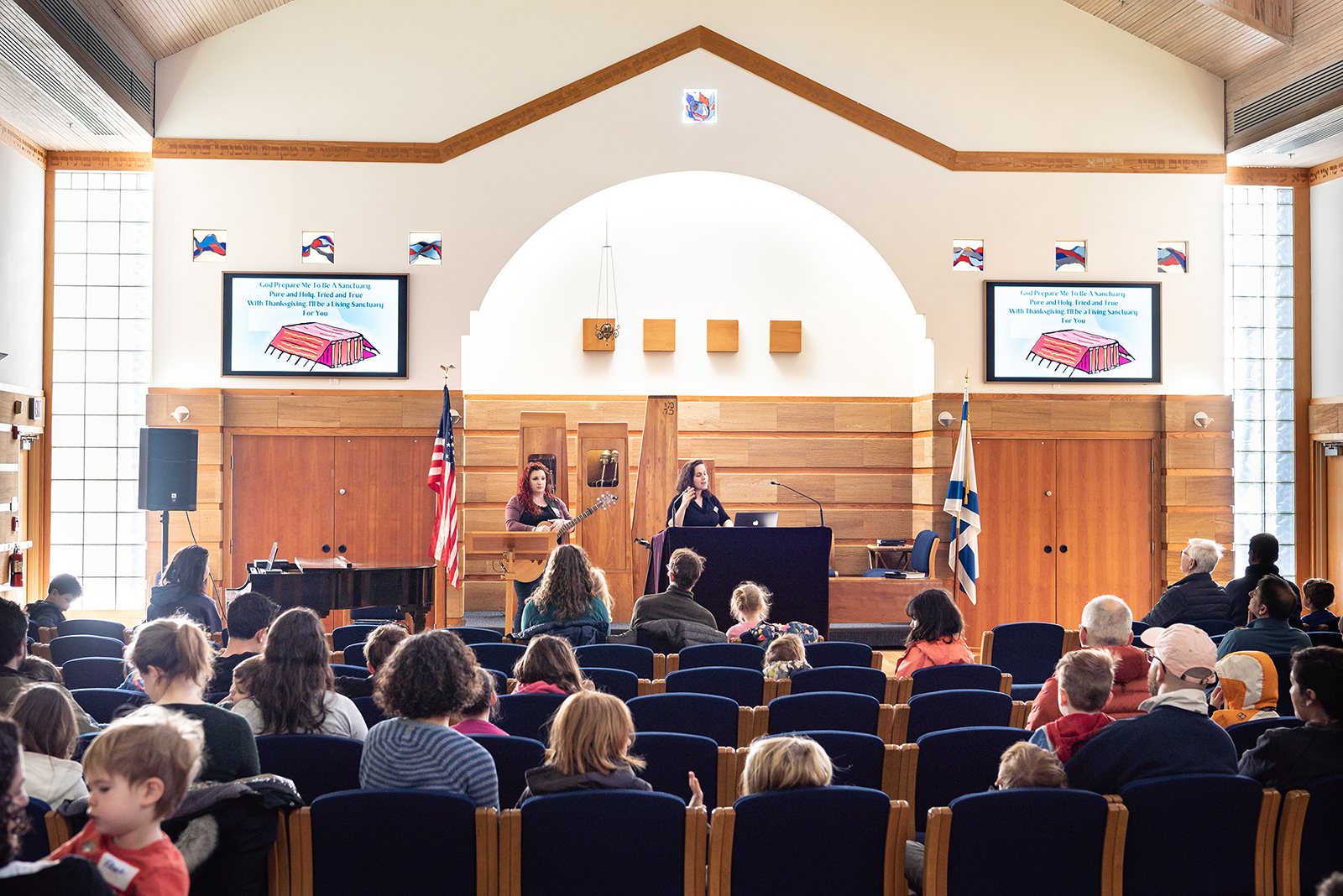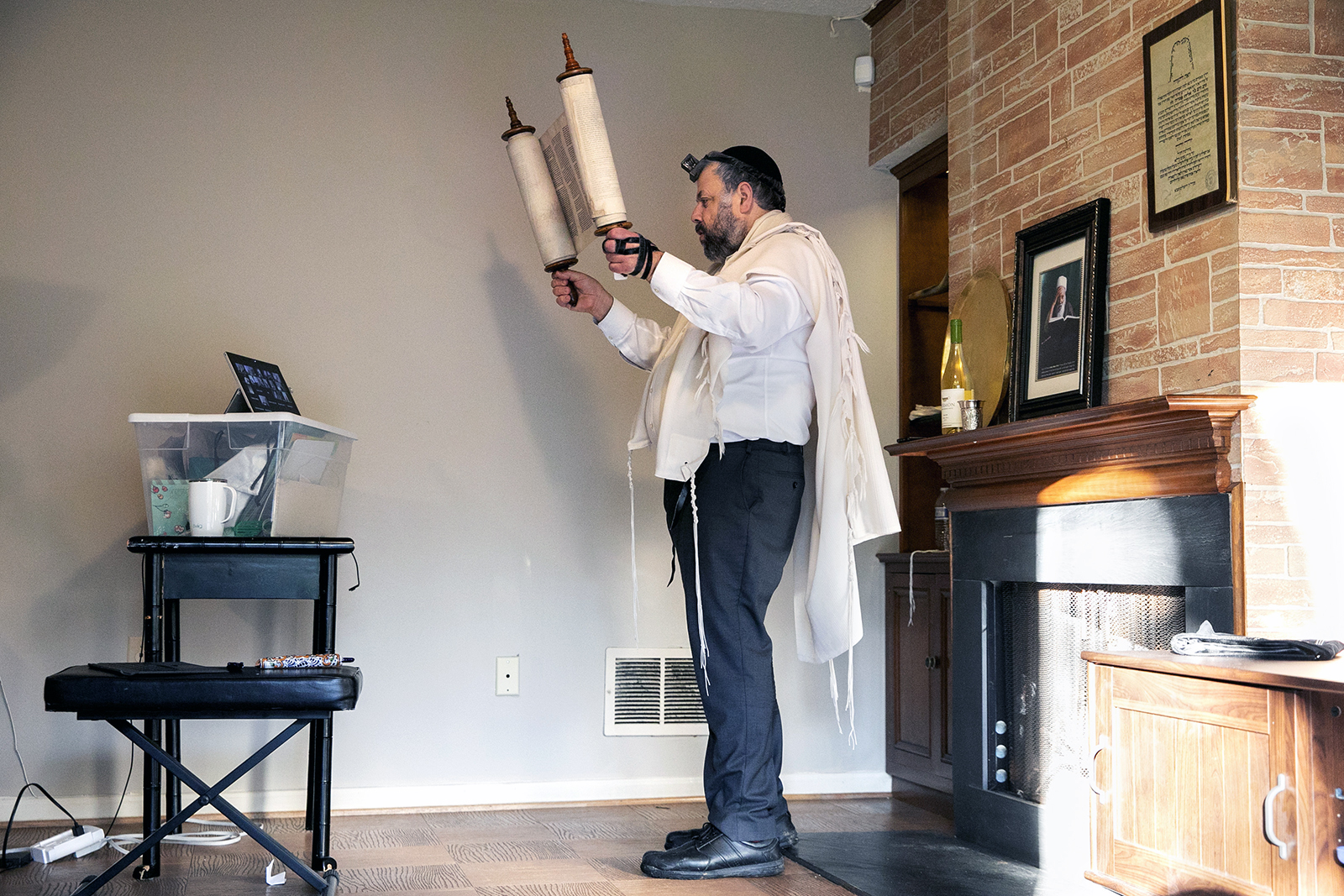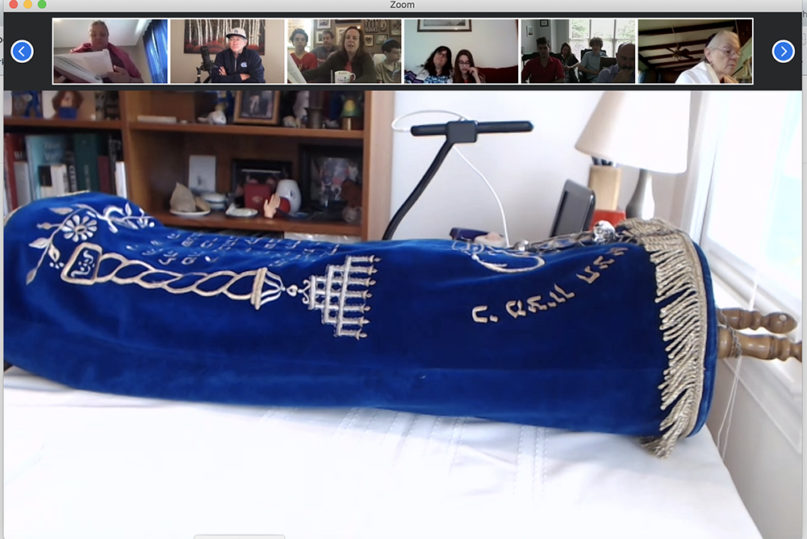(RNS) — After Amanda Siegel’s mother died in March, she decided she wanted to keep the tradition of saying the kaddish, the Jewish mourner’s prayer, every day for 11 months.
The kaddish, as with most Jewish ritual prayer, requires a quorum of 10 adult Jews, known as a minyan.
There was only one problem.
Her synagogue in Indianapolis, where she lives, hasn’t resumed its daily minyan since the COVID-19 pandemic ended.
Like countless other Jews who got used to watching services online during the pandemic, Siegel tapped some keywords in Google to see what other synagogues were offering. She found two — one in Chicago and one in New York City — that offered minyans on the four days her own synagogue does not.
Each weekday for the past six months, therefore, Siegel powers up her laptop, wraps a prayer shawl over her shoulders (and often, a tefillin box, or or phylacteries over her head and arm) and recites the kaddish from her home in the company of other Jewish mourners hundreds of miles away.

Amanda Siegel wears a prayer shawl and tefillin during a Zoom minyan. Photo courtesy of Siegel
Pandemic practices have brought what appears to be fundamental changes to how many Americans practice their faith, and Jewish worship is no exception. A new survey by the Synagogue Studies Institute finds that 85% of Jewish synagogues in the U.S. now offer worship online — a marked jump from 24% that did in 2019, prior to the pandemic. More significantly, 70% of synagogues surveyed said they expect they will continue to do so five years from now.
The survey of 248 U.S. synagogues will be published this fall as part of Faith Communities Today, a multifaith research initiative that has been tracking trends in the U.S. religious landscape since 2000.
“Synagogues have embraced technology in a big way, which is interesting because if we look at 2010, synagogues lagged behind churches in using technology,” said Rabbi Aaron Spiegel, the study’s principal investigator.
As the latest study shows, the embrace of videoconferencing and livestreaming is actually helping Jews engage more fully with their faith.
“I like the Zoom minyan better than no minyan,” said Siegel. “There are usually five or six mourners who have lost a parent who come every day and we see each other and we say the same prayers and we feel like we know what we’re going through. We’re not going through it alone, which is the point of minyan.”
RELATED: Study: Religious attendance dips slightly after pandemic
While Siegel hasn’t met her fellow online mourners in person, she now knows their names and faces and follows a few of them on LinkedIn. “It’s our little support group,” she added. “It really helps me every day.”
A research scientist and grant writer who works from home, Siegel also noted that she has begun donating to the Park Avenue Synagogue in New York City since she has started tuning into its Zoom minyan a few days a week.
Other synagogues have also made efforts to more deeply engage members online. At Temple Micah, a Reform congregation of 700 families in Washington, a key early lesson was shortening the length of the Friday night service.

Congregants attend a service at Temple Micah in Washington, D.C., in March 2023. Photo by Greg Land Photography
Rabbi Daniel Zemel said the hybrid 30-minute service includes candlelighting, blessings and a few songs that members can view as they’re sitting down for Sabbath meal.
“We try to make it feel as heimish as possible — as if we’re all in the same house together,” said Zemel, using the yiddish word for “homey.”
The Friday night service, as well as the Saturday morning service, has grown in popularity, and now attracts 40 to 80 participants each, about the same number that attend services in person on average.
Recently, Temple Micah invested in cameras that offer multiple views of the sanctuary so at-home participants can better see the faces of those in the sanctuary. “To see someone else’s face is a deeply human experience,” he said.
In addition, Zemel and his staff contact members ahead of each service to give them a role in leading a prayer or reciting a blessing via the Zoom screen projected in the sanctuary, so they’re not simply viewers but participants. On occasion, they prerecord some video clips to offer some visual variety. During the pandemic, for example, they videotaped the blowing of the shofar, or ram’s horn, at three locations — the Lincoln Memorial, the Martin Luther King Jr. Memorial and beside a few Jewish graves at Arlington National Cemetery..
“It has to make sense, it has to have some kind of seichel (wit or intelligence) or else people will turn off their computers or they’ll go and view something else,” Zemel said.
Research from the Hartford Institute for Religion Research shows that 80% of churches are now offering hybrid services with both in-person and remote options, while only 15% are worshipping in person only.

Rabbi Haim Ovadia holds a Torah scroll up toward an electronic tablet so that the 32 people attending his Zoom meeting can see it during a virtual morning minyan transmitted from Ovadia’s home in Potomac, Md., April 6, 2020. (AP Photo/Jacquelyn Martin)
That ongoing study, which is limited to Christian congregations, finds a decline in church attendance post-pandemic, but the drop-off is not as severe as some experts expected. A recent Pew Research Center study showed similar results, finding that the share of U.S. adults who generally say they attend religious services at least once a month dropped only slightly — from 33% in 2019, before the COVID-19 outbreak, to 30% in 2022.
The Synagogue Studies Institute, which surveyed leaders in liberal Jewish denominations but did not include Orthodox synagogues, also found that worship attendance at synagogues dropped between 2020 and 2023 — but grew from prepandemic levels if online attendance was factored in.
In this sense, the institute’s Spiegel, who fielded the study from February to May, suggested the pandemic — for all its hand-wringing about whether it might spell the death knell for public worship — has brought some positive, and perhaps durable, changes to worship.
Spiegel recalled that when his own father died, he could not physically attend minyan services every day during the mourning period because he was traveling. Online services were then unavailable. Today, there are so many new choices.
Now, when he hears synagogue leaders say “when do we get back to normal?” — meaning in- person-only services — he scratches his head in disbelief.
“This is normal now,” Spiegel said, referring to in-person and online worship. “To go back to the way it was before is just nuts.”
RELATED: Virtual worshippers often satisfied, but more Americans choose in-person services





